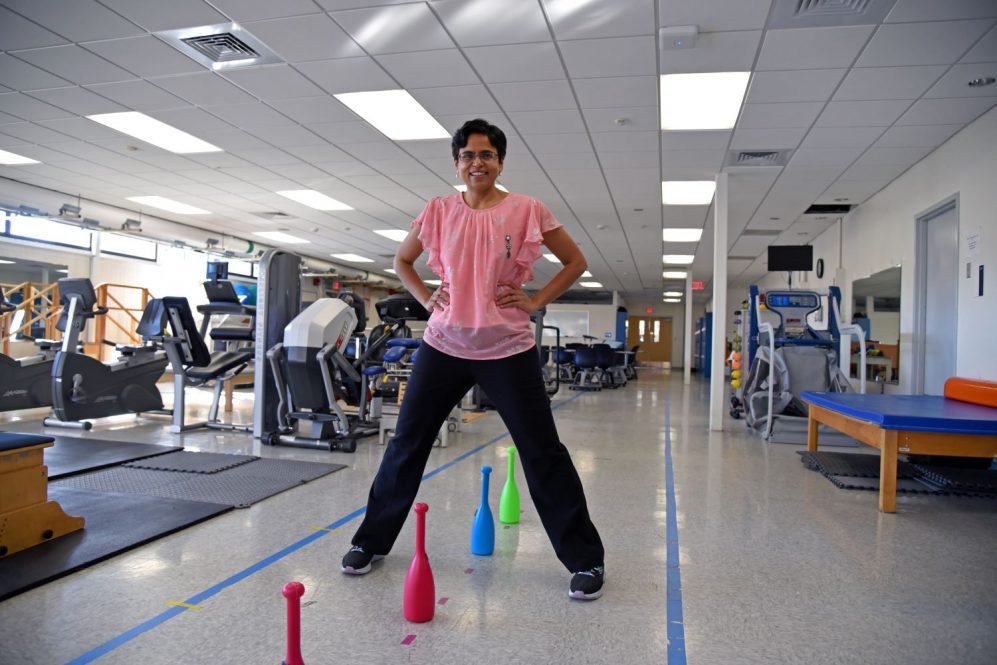In the early days of the COVID-19 pandemic, when some medical care shifted to a telehealth delivery model, Sudha Srinivasan, assistant professor of kinesiology in the College of Agriculture, Health and Natural Resources, was just beginning a new multi-site study assessing the effects of movement-based interventions in children with autism.
The move to telehealth provided Srinivasan with an unexpected opportunity to study how telehealth delivery compared to traditional face-to-face care.
Srinivasan and collaborators made modifications to their ongoing clinical trial protocol by adopting a virtual telehealth format in the early part of the pandemic. As the pandemic progressed, they provided families access to both virtual and face-to-face options for participation. This pivot allowed them to compare outcomes of based on delivery of movement-based interventions in children with autism.
The researchers recently reported a subset of their findings in a recent publication in Iproceedings. They found that the movement groups saw improvements in motor performance tests compared to pre-trial baselines regardless of modality.
“What was important to see was there were comparable gains in both groups suggesting that telehealth is a viable mode to deliver movement interventions in school-age children with autism,” says Srinivasan.
The interventions split the children, between ages five and 14, into three groups: creative movement, general movement, and seated play.
These whole-body interventions delivered in a small-group format focused on facilitating motor skills including coordination, balance, imitation, strength, endurance, and agility among children while also addressing their core difficulties in social communication and behavioral skills.
In the creative movement group, children played whole body movement games to music, danced, and also played with musical instruments. In the general movement group, children participated in strength-based activities and games like relay races and obstacle courses that targeted children’s endurance and agility. The seated play group, which represented the current standard of care for autism, engaged in more sedentary activities like reading together, building with blocks, and arts and crafts.
With the move to virtual delivery, the researchers sent caregivers kits with props and instructions for the activities. The researcher would join a Zoom call with the family to provide instructions and participate in the activities with the child and their family/caregivers. During virtual sessions, the caregiver frequently acted as the “therapist in the room” and provided more hands-on assistance to the child per their needs.
Children across all three groups, irrespective of the training modality completed standardized strength tests and a battery of other tests assessing motor performance.
“What our findings clearly indicate is that muscle strength and muscle endurance is something that can be worked on and that can improve in a duration of just eight weeks,” Srinivasan says.
Srinivasan says that the key to success of telehealth interventions in their study was caregiver involvement.
“I think that’s another big plus for telehealth. If the family is willing to and able to make the commitment in terms of time, then it really can help to train them to continue these activities beyond the research study itself,” Srinivasan says. “Where we saw real successes and child engagement is where the parent was able to facilitate.”
Srinivasan says movement-based interventions are important for children with autism as most care has traditionally focused on social communication and behavioral aspects of the disorder. But there is an increasing body of evidence that shows children with autism struggle with fundamental motor skills like balance and coordination.
A publication by Srinivasan’s collaborator Anjana Bhat at the University of Delaware, found that 87% of children with autism are at risk for motor impairment. This is likely due to how autism spectrum disorder impacts multiple areas of the brain.
“Motor impairments have been underrecognized and have not been given enough attention because ASD is a multisystem disorder,” Srinivasan says. “It’s social, it’s communication, so those issues come more to the forefront than issues related to movement. Nevertheless, when you think about it, everything you do in the world requires movement, for example, when you talk, walk, eat – we experience the world around us through our movements.”
The next step for this research, Srinivasan says, is conducting a larger trial that incorporates community implementation. She is also interested in continuing to study telehealth interventions as they offer the promise of greater accessibility.
“We want to bring in caregivers and clinicians more into our research because, ultimately, the reason why we are doing this research is because it has to translate into practice. It won’t translate into practice unless we get these stakeholders involved,” Srinivasan says.
Follow UConn CAHNR on social media



